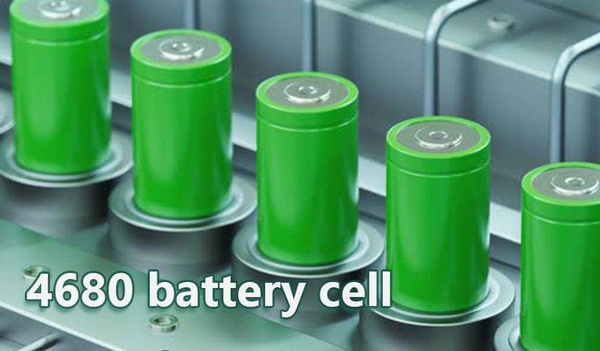The
4680 battery is an innovative advancement in battery technology, featuring a unique design and promising capabilities. Named for its dimensions—46mm in diameter and 80mm in height—this cylindrical battery is set to transform the energy storage and electric vehicle (EV) markets. In this article, we will delve into the technical specifications of the 4680 battery, compare it with traditional battery types, and explore current market trends and future potential.
Technical Specifications of the 4680 Battery
1. Energy Density
- 4680 Battery: Approximately 300-350 Wh/L
- Traditional Lithium-Ion Batteries: Typically 200-250 Wh/L
Comparison: The 4680 battery offers a significantly higher energy density compared to traditional lithium-ion batteries. This means that electric vehicles equipped with 4680 batteries can achieve longer ranges on a single charge, and energy storage systems can store more power in a compact space.
2. Charging Speed
- 4680 Battery: Enhanced by a tabless design, which reduces internal resistance and improves electrical conductivity, allowing for faster charging.
- Traditional Lithium-Ion Batteries: Charging speeds are generally slower due to higher internal resistance and conventional cell designs.
Comparison: The 4680 battery's tabless design allows for faster charging times, addressing a common limitation of traditional batteries and improving convenience for users of electric vehicles and other applications.
3. Safety
- 4680 Battery: Features advanced thermal management and structural enhancements to reduce the risk of overheating and thermal runaway.
- Traditional Lithium-Ion Batteries: Older designs may be more prone to overheating and thermal issues due to less advanced cooling technologies.
Comparison: The enhanced safety features of the 4680 battery provide a more reliable solution, minimizing risks associated with high-energy applications and improving overall safety.
4. Manufacturing and Cost
-4680 Battery: Benefits from a simplified design and manufacturing process, potentially reducing production costs and making advanced battery technology more cost-effective.
- Traditional Lithium-Ion Batteries: More complex assembly with multiple components, leading to higher production costs.
Comparison: The streamlined manufacturing process of the
4680 battery could result in lower costs for consumers, making high-performance battery technology more accessible and affordable.
Market Trends for the 4680 Battery
1. Electric Vehicle (EV) Industry
The 4680 battery is rapidly gaining traction in the automotive industry, with major manufacturers incorporating this technology into their latest EV models. The higher energy density and faster charging capabilities of the 4680 battery align with the growing demand for electric vehicles with longer ranges and shorter charging times. This trend is expected to continue as the automotive industry strives to meet consumer expectations and regulatory requirements for electric mobility.
2. Energy Storage Solutions
In the renewable energy sector, the 4680 battery offers a promising solution for large-scale energy storage. Its high energy density and cost-efficiency make it suitable for storing power from renewable sources such as solar and wind. As the adoption of renewable energy increases, the 4680 battery is well-positioned to support grid stability, energy balancing, and backup power applications.
3. Consumer Electronics
The advancements in 4680 battery technology also hold potential benefits for consumer electronics. Devices such as smartphones, laptops, and tablets could leverage the improved energy density to provide longer battery life and better performance. This could enhance user experiences and drive further adoption of advanced battery technologies in everyday gadgets.
Future Potential of the 4680 Battery
1. Technological Advancements
The 4680 battery represents a significant leap forward in battery technology, but further advancements are expected. Future developments may include improvements in energy density, charging speed, and safety, continuing to push the boundaries of battery performance. Ongoing research and innovation will likely drive new applications and enhance the capabilities of the 4680 battery.
2. Sustainable Energy Impact
The potential of the 4680 battery to support sustainable energy practices is substantial. By improving the efficiency of energy storage and enabling longer ranges for electric vehicles, this technology contributes to reducing carbon emissions and promoting the use of renewable energy sources. The continued evolution of 4680 batteries will play a crucial role in advancing global sustainability goals.
3. Emerging Market Opportunities
As the 4680 battery technology matures, new market opportunities are expected to arise. Industries such as aerospace, robotics, and more may explore the use of this advanced battery technology for specialized applications. The versatility of the 4680 battery could lead to innovative solutions across various sectors, driving further growth and development.
The 4680 battery is a groundbreaking advancement in battery technology, offering significant improvements over traditional designs. Its higher energy density, faster charging, enhanced safety features, and cost-effective manufacturing make it a leading choice for electric vehicles, energy storage systems, and consumer electronics. As this technology continues to evolve, it holds the promise of driving major advancements in energy storage and sustainability.
By understanding the technical specifications, market trends, and future potential of the 4680 battery, businesses and consumers can make informed decisions and stay ahead in the rapidly changing landscape of battery technology.
